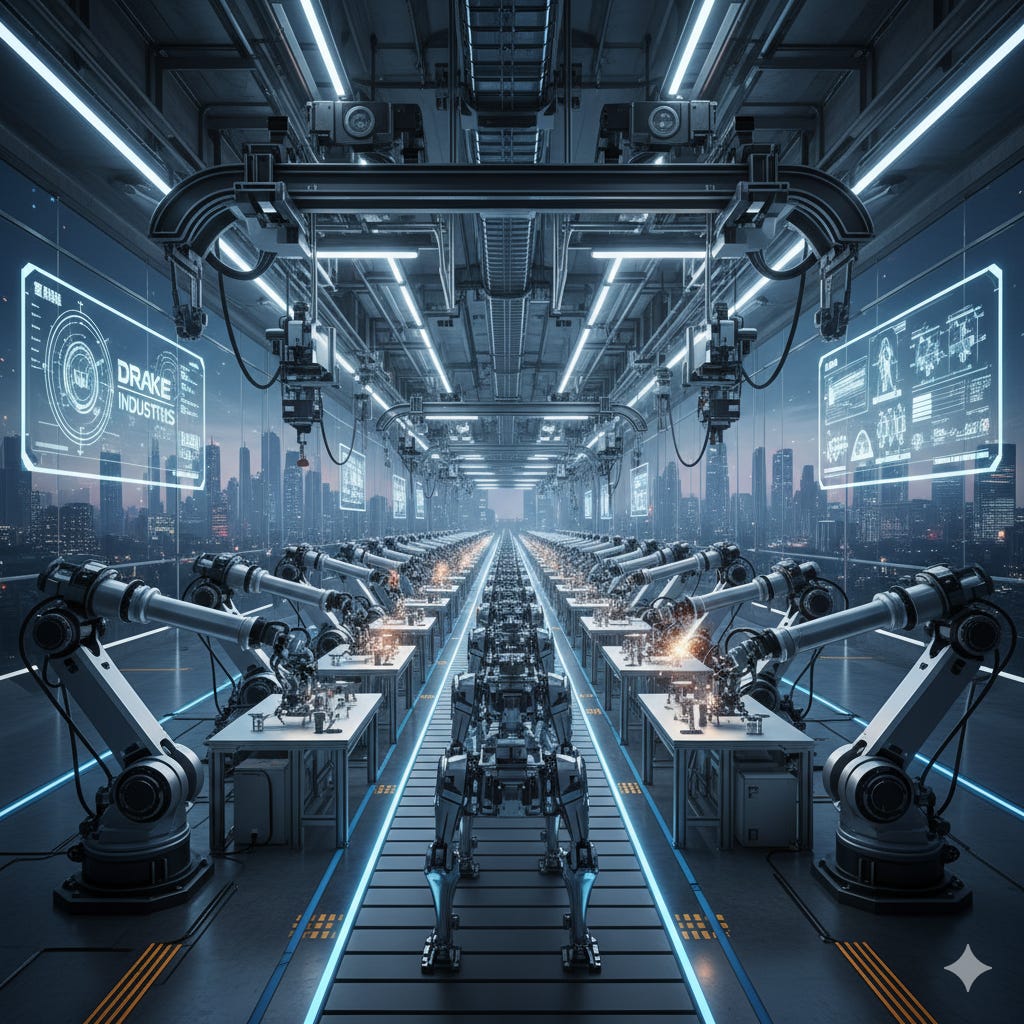Dark Factories
An hour of a robot’s time — even with a coffee break — should be about as expensive in the US as it is in Vietnam. What matters now is capital, not labor. It takes massive investment to develop.
Tuesday, October 14th, 2024
Bill Bonner, from Dublin, Ireland
Does the name Frederick Taylor mean anything to you? It didn’t to us, either. But this is the ‘Taylor’ from whom ‘Taylorism’ got its name. He is the fellow who developed the ‘time-motion’ studies that led to more efficient factories — especially in Japan.
And it was from Taylorism that engineers were able to reduce factory functions to repeatable, programmable actions — precise, machine-like motions — that a robot could do better than a human being.
The idea of a mechanical person...a robot...has been around for a long, long time. But the first modern, functional expression of it came in 1960 when George Devol sold his ‘Unimate’ to General Motors.
The ‘Unimate’ took his place on the assembly line in Ewing Township, New Jersey, where he could handle the hot metal that humans couldn’t.
Of course, the advantages of robots over humans are many. They are not bothered by fumes or noise or on-the-job injuries. They don’t call in sick or take vacations. They don’t get overtime. They don’t unionize. They don’t talk back and they don’t waste their time showing each other pictures of their grandchildren.
Labor is the number one expense of most industries, so it was obvious that businesses would try to reduce costs with automation...that is, by bringing in the robots. Robot welders. Robot plumbers. Robot draftsmen. Robot seamstresses. Robots who bus. Robots who truck. Robots who bust their humps. Robots who lift that bale and tote that barge...and then, don’t get drunk or land in jail.
America had the lead in the 1960s...as it did in so many other areas. American assembly lines were admired and imitated all over the world.
But this is 2025. And now, US assembly lines are often seen as relics of an earlier age.
After recent visits, for example, US business executives are said to be ‘terrified’ by the way China’s technological advances have leap-frogged ahead. The Telegraph:
“It’s the most humbling thing I’ve ever seen,” said Ford’s chief executive about his recent trip to China.
Andrew Forrest, the Australian billionaire behind mining giant Fortescue:
“I can take you to factories [in China] now, where you’ll basically be alongside a big conveyor and the machines come out of the floor and begin to assemble parts,” he says.
“And you’re walking alongside this conveyor, and after about 800, 900 meters, a truck drives out. There are no people – everything is robotic.”
The executives report seeing factories — running at full speed — but with almost no human beings in evidence. And no lights on. They are ‘dark factories’ where armies of robots do the sorting, fitting, guiding, screwing, welding, wrapping — all the things that humans used to do.
The first wave of America’s de-industrialization was said to be driven by cheaper labor overseas. The US feds ran growing deficits, raising prices and labor rates in the US, making it difficult for US-based factories to compete with the foreigners. America had high-wage, unionized workers. China had 500 million peasants willing to work for almost nothing.
But now, low-cost labor is becoming much less important. An hour of a robot’s time — even with a coffee break — should be about as expensive in the US as it is in Vietnam. What matters now is capital, not labor. It takes massive investment to develop and install robotic labor. It takes time and skill, too.
And while America was putting its young people deep in debt for degrees in diversity and communication...the Chinese were graduating robotic engineers. In America, only 1 in 20 college students choose engineering. In China, it’s one in three. This year, China will graduate twice as many engineers as the US.
And while the US invests trillions in AI and data centers, China seems to be focusing its investment on more immediate projects with a much quicker and more certain pay off. A basic model assembly-line robot costs only about $25,000. If it replaces a single human worker, it pays for itself in about six months. It might very well work two shifts, without complaining, bringing the payback period down to three months. If that were true, it would make the investment hugely profitable...almost immediately.
More sophisticated, AI-enhanced, robots cost $200,000 and more. Still, the rate of return could be infinitely higher than the AI itself. The US invested more than $100 billion in AI last year. A report from MIT claimed that 95% of these AI investments produced ‘no measurable gains.’
There are already some two million robots at work in China. It added nearly 300,000 more last year. By contrast, the US added 34,000.
You might wonder...how come the US didn’t invest in robots? It had high-cost labor. Why didn’t it put its abundant capital to work increasing productivity without the need for expensive humans?
More broadly: How come the US is not still leading the world in robots, as it was in 1960?
A lack of engineers? Resistance from organized labor? We don’t know. But when you can ‘print’ money, and borrow it so cheaply, why bother to earn it?
Regards,
Bill Bonner




The real question is how do we reduce the number of humans in government - especially replace those in Congress with consensual vote of each representatives' voters. The robotics gathers what the voters want on each bill (with AI and internet - the People don't need humans in Congress at all) and make it a true Republic. The real problem in America is the Government and anything that can reduce and eliminate government employees is a blessing.
The "AI" we're investing in is mostly to replace white collar workers and sell more ads, not build real things. Big difference.